Plants That Look Like Marijuana can often perplex even seasoned gardeners and enthusiasts. Among the myriad of flora, certain species bear an uncanny resemblance to the infamous Marijuana plant, whether through leaf shape, flower color, or overall structure.
However, distinguishing between them is essential, especially considering the legal implications and potential confusion. Understanding the nuances in characteristics such as leaf arrangement, stem texture, and floral patterns is crucial in accurately identifying these look-alikes.
The characteristics of Marijuana leaves
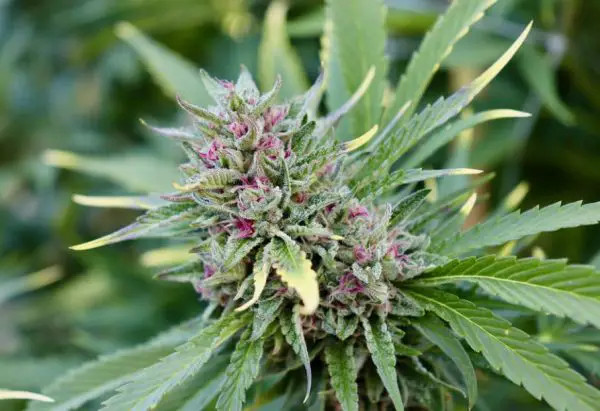
Marijuana leaves typically have a distinctive appearance that sets them apart. They are palmate, meaning the veins radiate out from a central point like the fingers of a hand. The edges of the leaves are serrated, with jagged edges that give them a unique silhouette. Depending on the strain and growing conditions, marijuana leaves can vary in color from vibrant green to deep purple, and sometimes even shades of red or orange. They’re also known for their resinous coating, which contains the cannabinoids and terpenes responsible for the plant’s effects and aroma.
Different Types of Plants That Look Like Marijuana
Cranberry Hibiscus (Hibiscus acetosella)
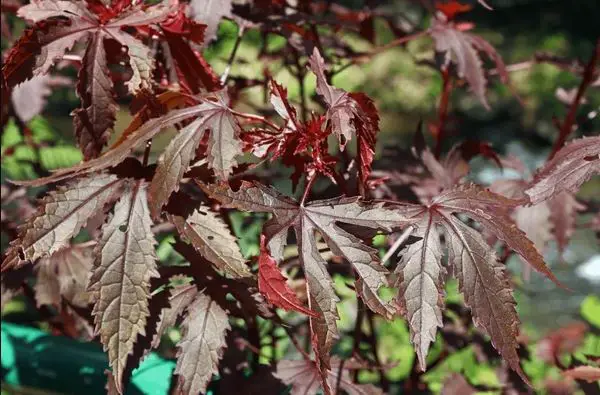
Cranberry Hibiscus (Hibiscus acetosella) may bear a resemblance to Marijuana initially, but it belongs to the mallow family (Malvaceae), distinct from the Marijuana plant. Indigenous to Africa, it thrives in arid, warm climates.
Characterized by reddish-brown stems and deeply lobed leaves often mistaken for Marijuana, cranberry hibiscus flaunts larger, vibrant flowers in crimson, pink, or white hues.
Valued for its culinary and medicinal applications in Africa, its leaves and flowers are consumed as greens, while its berries are utilized in jams, jellies, and wines. Traditional Chinese Medicine recognizes its efficacy in treating digestive ailments like indigestion, diarrhea, and dysentery.
Texas Star Hibiscus (Hibiscus coccineus)
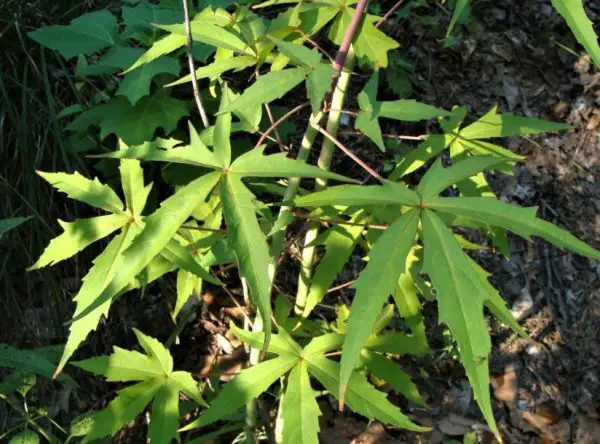
Texas Star Hibiscus (Hibiscus coccineus) is often mistaken for Marijuana due to their similar leaf structures and vibrant flowers. Both boast large, lobed leaves with serrated edges and striking red blooms with yellow centers.
To differentiate, observe the floral arrangement and stem characteristics. Texas Star Hibiscus flowers grow in pairs along woody stems, while Marijuana flowers are solitary or in clusters of three, with herbaceous (soft) green stems.
Indigenous to the southeastern United States, Texas Star Hibiscus thrives in moist habitats like streams and swamps. This ornamental gem is favored in landscaping, particularly in butterfly gardens, adding a splash of vibrant color and attracting pollinators.
Coral plant (Jatropha multifida)
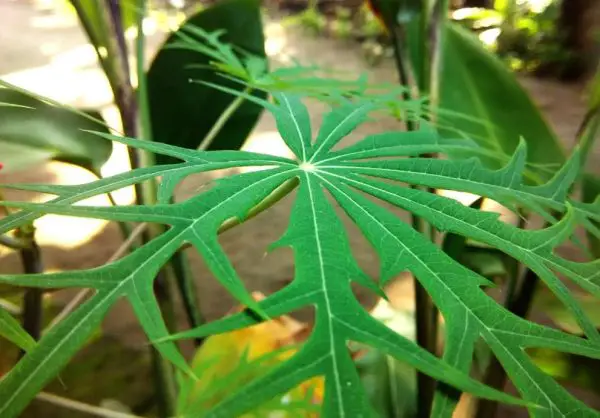
The Coral plant, scientifically known as Jatropha multifida, is an intriguing specimen that often confounds observers with its resemblance to Marijuana . Its foliage, characterized by slender green and brown leaves emanating from a single point, bears a striking semblance to the infamous herb. Even its petite white blossoms could easily be mistaken for those of Marijuana upon cursory inspection. However, a closer examination reveals a distinct olfactory cue that sets it apart: the scent of burnt rubber or cat urine.
Native to warm climates in Australia and Asia, this plant finds widespread use in landscaping for its ornamental allure. Beyond aesthetics, it possesses medicinal properties utilized in treating burns, skin irritations, open wounds, and plantar warts. In Chinese medicine, it’s also employed to stimulate urination in bedridden patients, showcasing the multifaceted nature of this enigmatic botanical species.
Japanese Maple (Acer palmatum)

Japanese Maple, scientifically Acer palmatum, often deceives from afar with its five-lobed leaves reminiscent of marijuana foliage. Despite this visual similarity, Japanese Maple is notorious for its invasive nature, rapidly encroaching on other vegetation in various regions. Originally hailing from Asia, it now thrives in North America, Europe, and Australia.
Distinguishing Japanese Maple from Marijuana lies in its leaf coloration; often showcases hues of red or purple, unlike the green leaves of Marijuana. Additionally, its smaller leaf size and absence of flowers set it apart. Renowned for its ornamental beauty, Japanese Maple finds extensive use in landscaping, adding a touch of elegance to gardens and parks worldwide.
Okra (Abelmoschus esculentus)
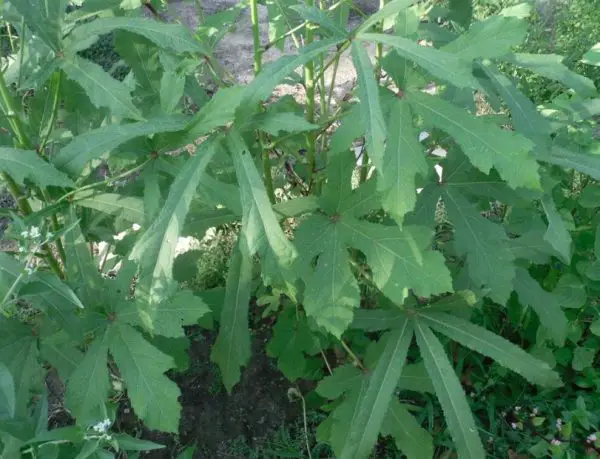
Okra, scientifically Abelmoschus esculentus, belongs to the mallow family, prized for its delectable green seed pods. At first glance, it might be mistaken for Marijuana, yet discernible disparities emerge upon closer examination.
Distinguishing features include okra’s five-lobed leaves, contrasting with the seven or more lobes of Marijuana leaves. Additionally, okra presents large white or yellow flowers, unlike the small green or purple blossoms of Marijuana.
Native to tropical Asia and Africa, okra has expanded its reach to tropical and subtropical regions globally.
Apart from culinary uses, okra boasts a rich tradition in traditional medicine, purportedly aiding in blood sugar regulation, digestion, and immune enhancement, underscoring its multifaceted significance.
Cassava (Manihot esculenta)
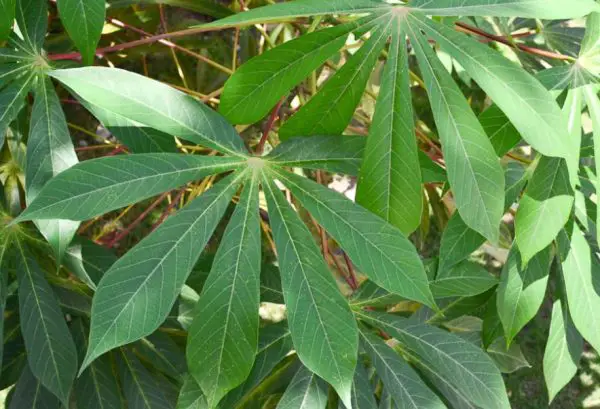
Cassava, or Manihot esculenta, originates from South America, renowned for its starchy tuberous roots. Despite its height potential and occasional white flowers, it’s distinct from Marijuana. Cassava’s large lobed leaves contrast with Marijuana’s smaller, delicate foliage, and it doesn’t yield flowers or buds.
Rich in carbohydrates, cassava finds diverse culinary uses, from flour to alcohol production, enriching traditional dishes worldwide. Beyond its culinary applications, cassava holds a storied tradition in folk medicine, purportedly enhancing digestion, bolstering the immune system, and regulating blood sugar levels. This versatile shrub epitomizes the fusion of cultural significance and nutritional utility across continents.
Spider flowers (Cleome spp.)

Spider flowers, belonging to the Cleome spp., are ubiquitous across North America, often spotted in the wild with their distinctive deep red center resembling a spider. Despite its benign nature, it frequently gets mistaken for Marijuana due to its semblance to the illicit herb. This member of the mustard family shares kinship with radishes, turnips, and cabbage, thriving under full sun and in well-drained soil.
Rich in history, spider flowers have served various medicinal purposes. The Choctaw and Cherokee Indians utilized them to treat snake bites, while the Blackfoot Indians applied them as poultices for wounds. Additionally, folklore attributes diuretic, expectorant, and abortifacient qualities to this versatile plant.
Scarlet Hibiscus (Hibiscus coccineus)
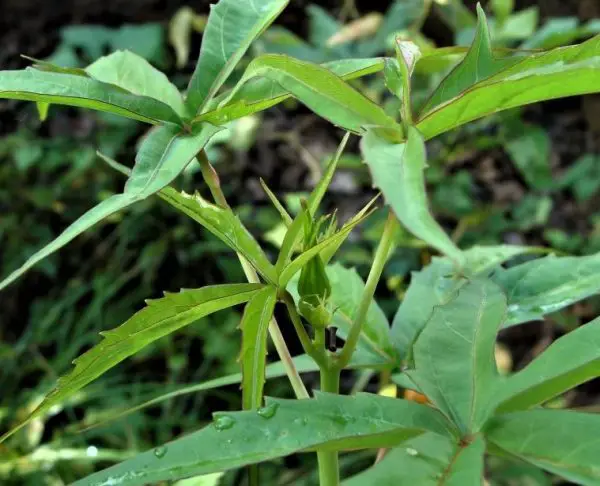
The Scarlet Hibiscus, also known as red sorrel, earns its moniker from both its tangy flavor and crimson stems. Despite its membership in the Hibiscus genus, it lacks any psychoactive properties, unlike its infamous lookalike, Marijuana. Particularly when not in bloom, it’s often mistaken for the illicit herb due to their visual similarity.
Thriving in tropical and subtropical regions worldwide, the Scarlet Hibiscus boasts red blooms, a distinguishing feature from Marijuana’s white flowers.
Beyond its ornamental appeal, this plant holds a rich history in traditional medicine. Its leaves combat fevers, while its roots address urinary disorders. Additionally, folklore attributes anti-inflammatory, antioxidant, and anticancer properties to this versatile botanical species.
Kenaf (Hibiscus cannabinus)
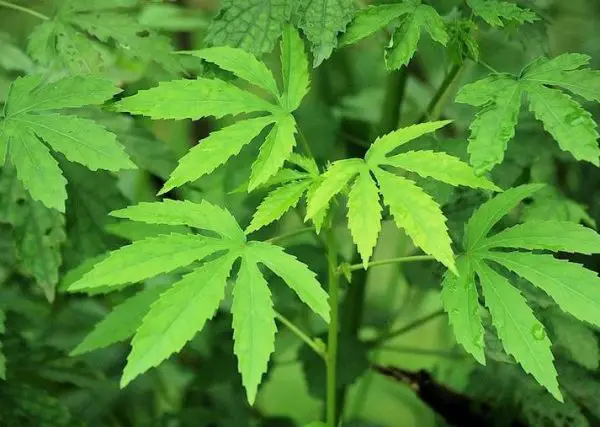
Kenaf, scientifically known as Hibiscus cannabinus, often draws a mistaken identity for Marijuana with its vibrant red flowers. However, this weedy plant is more akin to okra, belonging to the same botanical family. Dried and crushed, its leaves and stems serve as valuable materials for rope or fabric production. Originally from Africa, kenaf now thrives in tropical and subtropical regions globally.
In traditional medicine, kenaf boasts a diverse array of applications. Its leaves combat fever, diarrhea, and dysentery, while its roots address urinary disorders. Moreover, folklore attributes kenaf with anti-inflammatory, antioxidant, and anticancer properties, underscoring its significance beyond its visual resemblance to Marijuana.
Chaste Tree (Vitex agnus-castus)
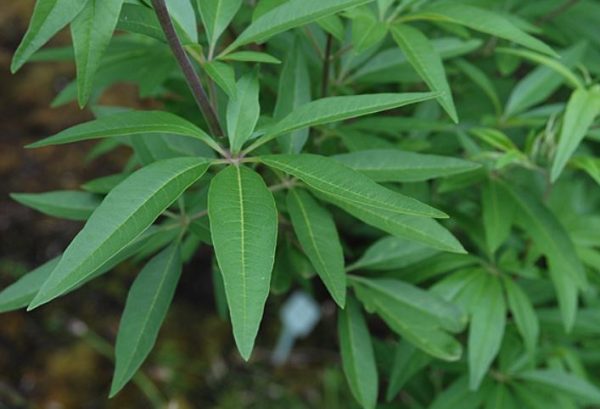
Chaste Tree, scientifically known as Vitex agnus-castus, shares a visual likeness with Marijuana but emits a distinct scent, setting it apart. Despite their similarities, these plants are unrelated, even though they both feature serrated leaves and small white flowers. Belonging to the Verbenaceae family, alongside teak and lemon verbena, Chaste Tree thrives in Mediterranean-like climates, donning white or pink blossoms and red berries.
Diverging from Marijuana, Chaste Tree lacks psychoactive properties. Renowned in traditional medicine, it’s reputed for alleviating symptoms of premenstrual syndrome (PMS), enhancing breast milk production in nursing mothers, and promoting skin health, underscoring its multifaceted medicinal significance.
Muster-John-Henry (Tagetes minuta)
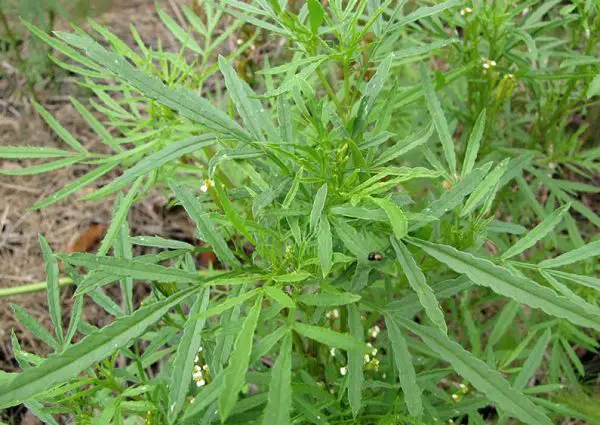
The Muster-John-Henry (MJH), native to Mexico and Guatemala, thrives in moist, shady locales at elevations ranging from 2000 to 5000 ft (600–1500 m). Although resembling Marijuana at first glance, discernible disparities emerge upon closer scrutiny.
MJH sports diminutive yellow blossoms, unlike Marijuana’s green or purple flowers, and its leaves are deeply divided, in contrast to Marijuana’s delicate foliage.
In traditional Mexican medicine, MJH serves diverse therapeutic roles, tackling ailments like stomachaches, diarrhea, and fevers. Furthermore, it’s reputed for its insecticidal prowess, frequently employed as a natural pesticide, showcasing its multifaceted significance beyond its visual resemblance to Marijuana.
Sweetfern (Comptonia peregrina)
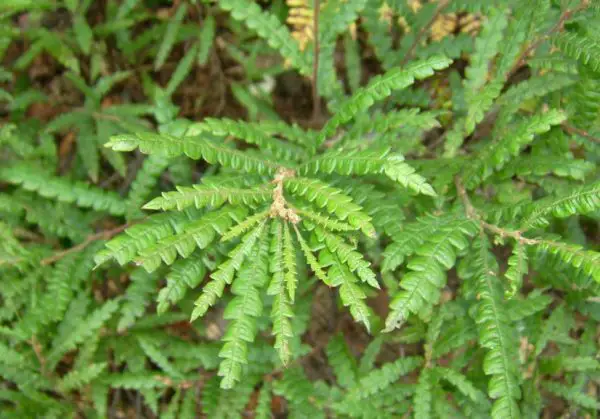
Sweetfern, or Comptonia peregrina, initially appears akin to Marijuana but reveals distinct features upon closer inspection. These deciduous North American shrubs emit an aroma reminiscent of Marijuana. However, their foliage sets them apart, comprising small, scale-like leaves arranged in pairs along the stem.
While green in spring and summer, the leaves transition to hues of red or brown in fall. Valued for ornamental landscaping, sweetferns serve multifunctional roles. They’re utilized for tea-making, herbal remedies, and as a natural insecticide. Thus, sweetfern embodies a blend of visual intrigue, olfactory allure, and practical utility within the botanical realm.
Sunn Hemp (Crotalaria juncea)
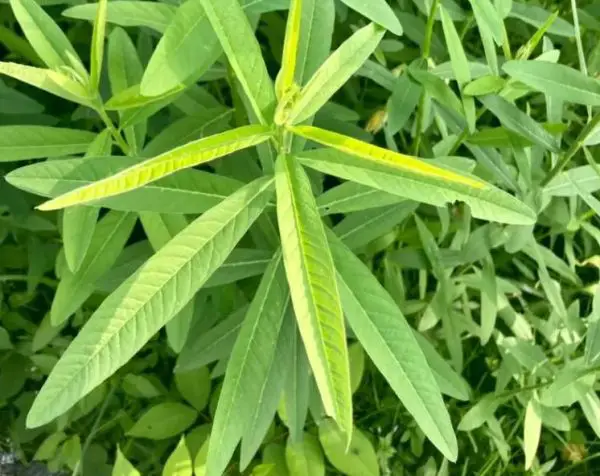
Sunn Hemp (Crotalaria juncea) bears a striking resemblance to Marijuana, often leading to confusion. Both feature long, slender green leaves with serrated edges. However, discerning between them reveals key disparities.
Sunn hemp distinguishes itself with its slightly hairy leaves, yellow flowers (in contrast to Marijuana’s white or light green blooms), and reddish stems. Originating from India, it thrives in tropical and subtropical climates globally.
Utilized for multiple purposes, sunn hemp serves as a green manure crop, animal fodder, and fiber resource. Moreover, its applications extend to the production of bioplastics and biofuels, alongside traditional uses like rope, fabric, and paper production in certain regions.
Oregano (Oreganum spp.)
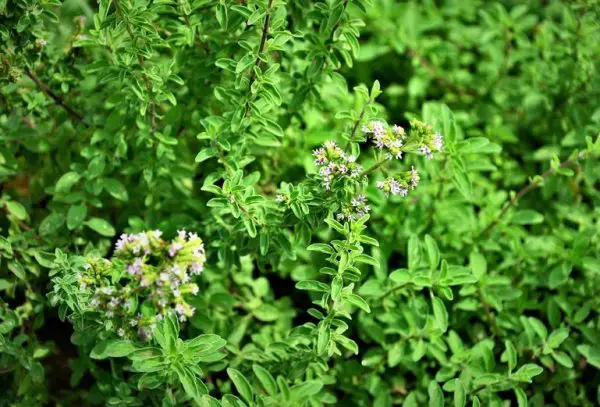
Oregano (Oreganum spp.), renowned in Italian and Greek cuisine, stands apart from weeds primarily through its flowers and leaf structure. Sporting white or purple blooms, oregano diverges from weed’s small, greenish-white flowers. Additionally, oregano leaves feature a distinct pointed shape compared to the broader leaves of weeds. Originating from temperate Eurasia and the Mediterranean, oregano finds widespread use in culinary creations like pizza and pasta sauce, as well as in flavoring oils, vinegar, and dressings.
Beyond its culinary allure, oregano boasts medicinal properties, serving as a natural antibiotic and remedy for ailments such as respiratory infections, stomach discomfort, and menstrual cramps.
Mint (Mentha spp.)
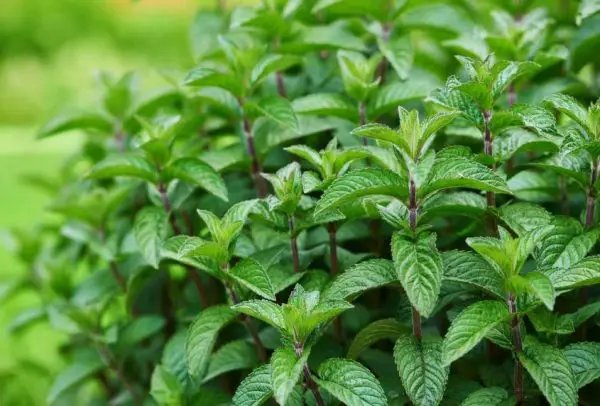
Mint (Mentha spp.) is easily identifiable by its serrated leaves, distinct minty aroma, clustered flowers, and opposite leaf arrangement on the stem. Unlike Marijuana, which has smooth-edged leaves and a more earthy smell, mint is widely used in culinary dishes, teas, cosmetics, and essential oils. Its versatility extends to potential health benefits, including aiding digestion, alleviating nausea and headaches, and enhancing immunity, as suggested by some studies.
Whether enjoyed in a refreshing beverage or as a flavorful addition to dishes, mint remains a beloved herb appreciated for both its taste and potential wellness perks.






